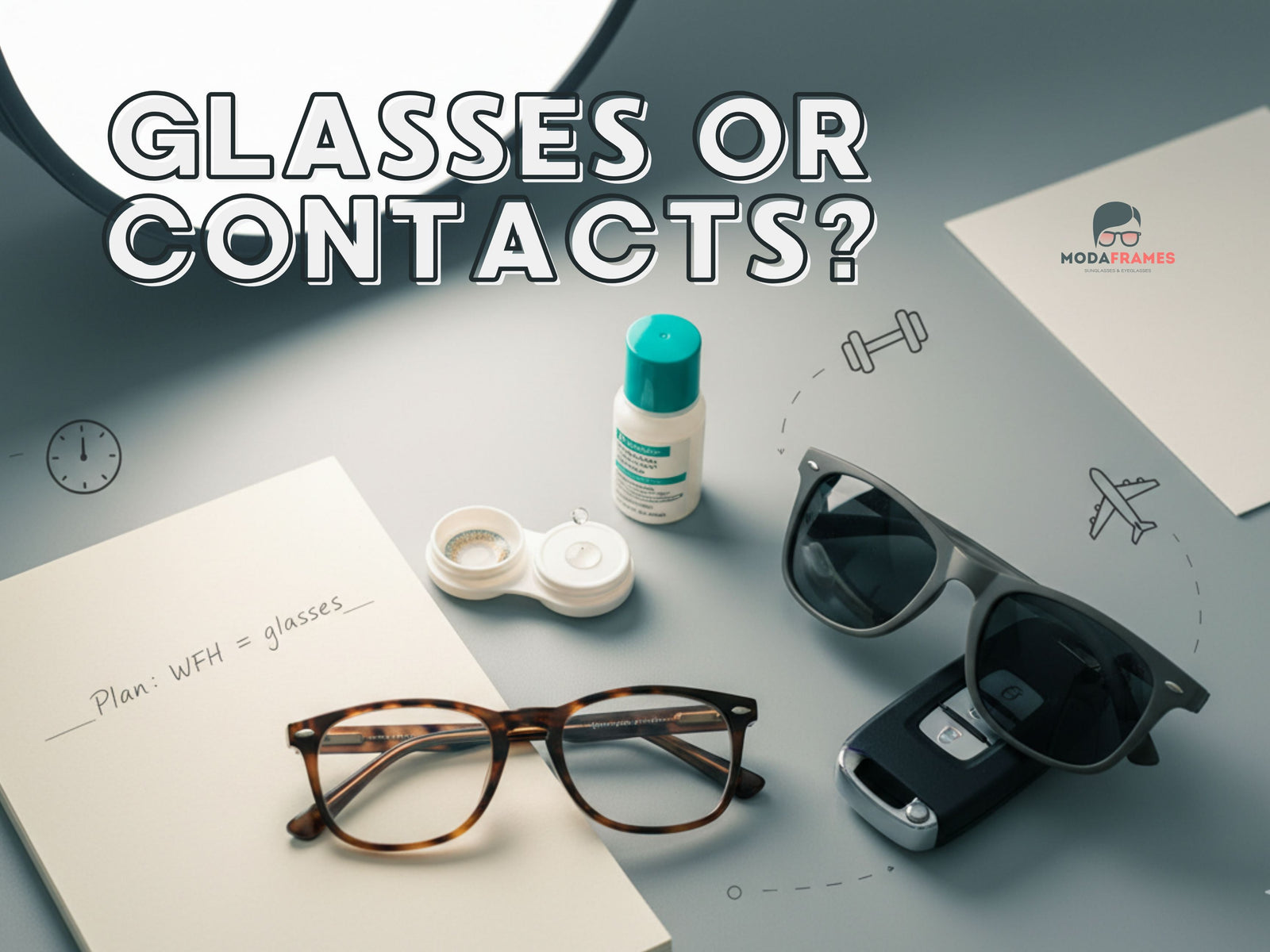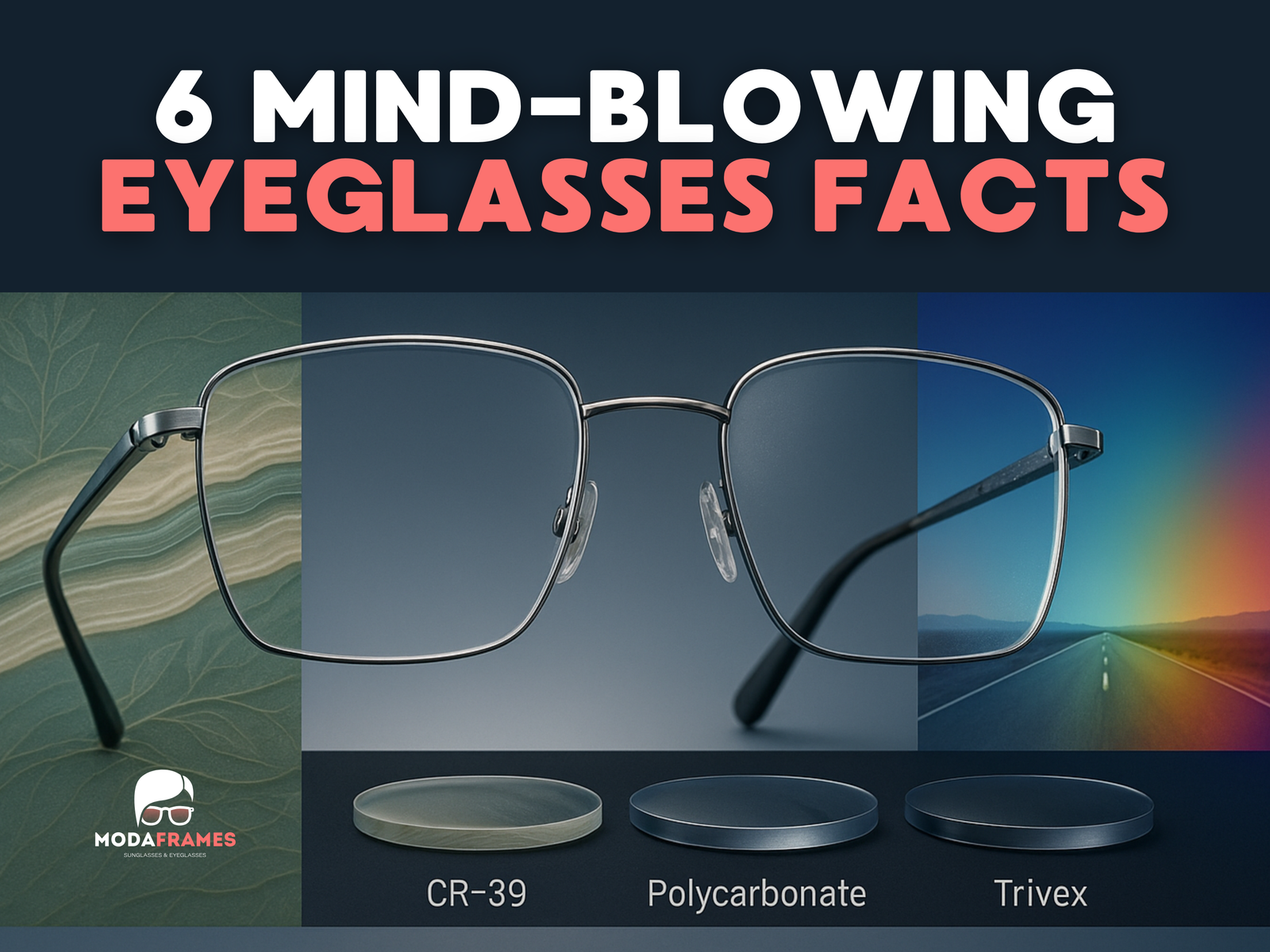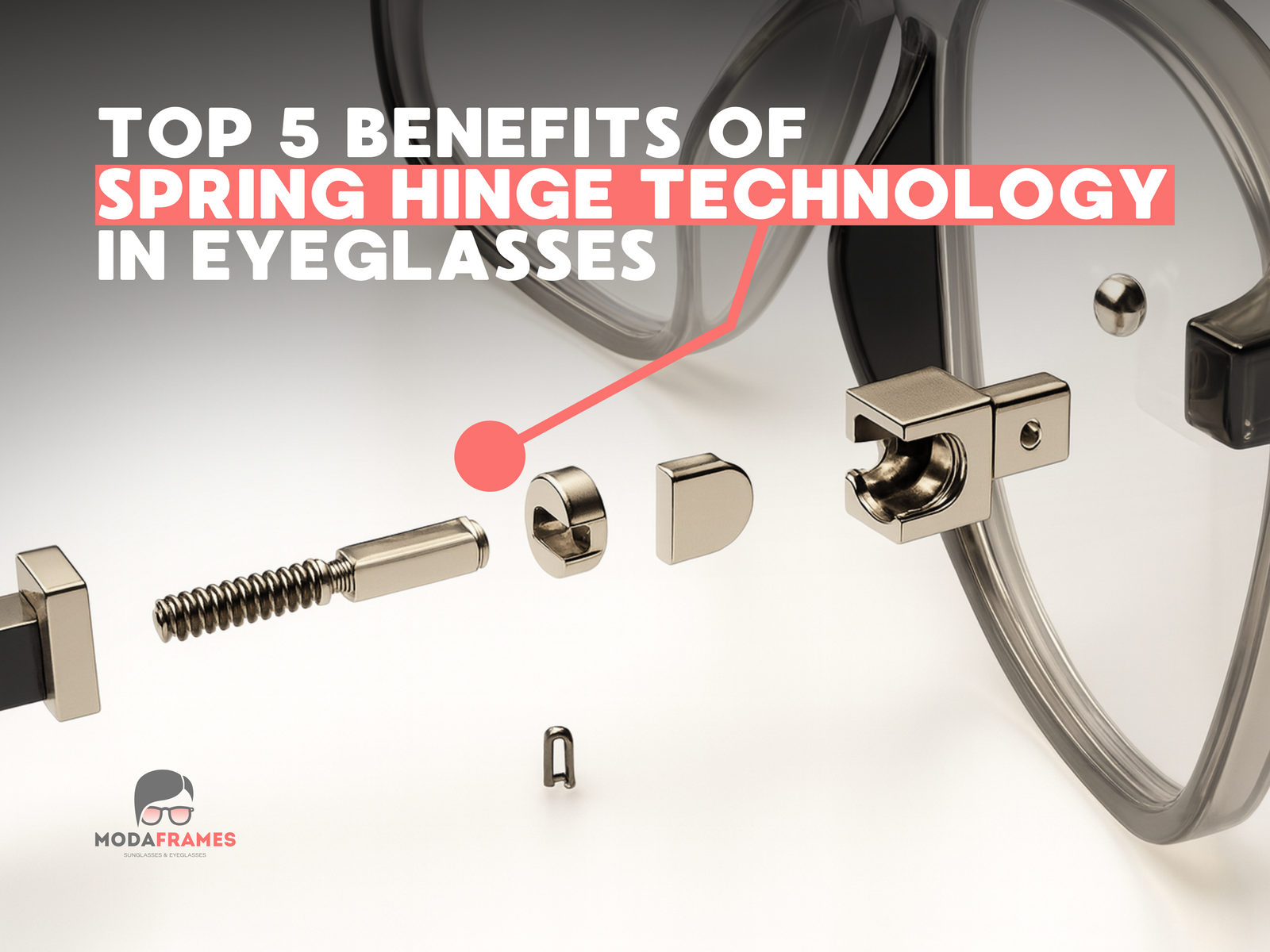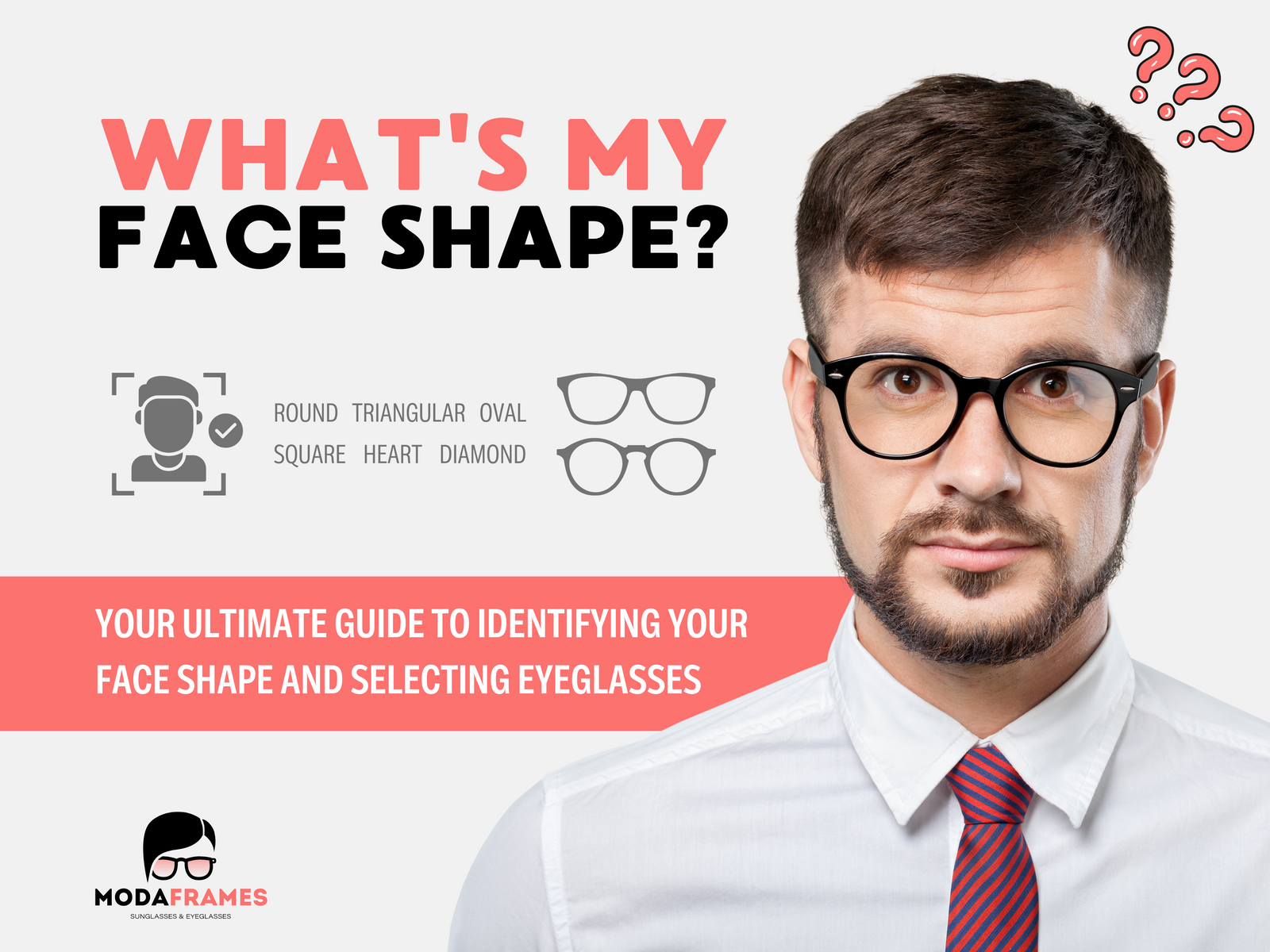Introduction: The Subtle Signals Your Eyes Are Sending

That familiar end-of-day feeling: a dull headache creeping in, tired and burning eyes, and a general sense of fatigue you can’t quite shake. In our screen-focused world, it's easy to dismiss these symptoms as the normal cost of a busy day. But what if your body is trying to tell you something more? Before you chalk it up to a long day, ask yourself: could your eyes be working overtime to compensate for a vision problem? If so, these subtle discomforts may be the key signs you need glasses, and it might be time to think about whether you need new glasses.
1. Frequent Headaches, Especially After Focusing

Persistent headaches are a primary indicator that you might need new glasses. Specifically, vision-related headaches tend to occur toward the late afternoon and are felt as a dull ache in the forehead, temples, or behind the eyes, often surfacing after visually demanding tasks like reading or computer work.
They are frequently a direct result of eye strain. When you have an uncorrected refractive error—such as farsightedness (hyperopia), nearsightedness (myopia), or astigmatism—the small muscles in and around your eyes work harder to focus. This overexertion can cause the eye muscles to contract too much, physically fatiguing the eye and triggering pain. Many people mistake these for simple tension headaches without considering the underlying ocular cause, but if you're experiencing headaches caused by vision problems, an updated prescription could provide significant relief.
“A small change in your prescription can make a huge difference in visual acuity and reduce the likelihood of headaches occurring,” says Dr. Ferrell.
Curious how frame engineering can improve comfort once you’ve updated your Rx? Read our related guide on spring hinge technology—it can reduce slippage and pressure points for long wear.
2. Blurry Vision at Any Distance

Blurry or distorted vision is one of the most direct symptoms of vision deterioration and a classic sign of a refractive error. If objects appear hazy, fuzzy, or out of focus, your eyes are struggling to direct light correctly onto your retina. The specific type of blurriness can offer clues about the underlying issue:
- Nearsightedness (Myopia): Difficulty seeing distant objects clearly, such as road signs or a presentation screen, while close-up vision remains sharp.
- Farsightedness (Hyperopia): Trouble focusing on nearby objects, like the text on your phone or in a book, causing them to appear blurry.
- Astigmatism: Blurry or distorted vision at all distances, caused by an imperfection in the curvature of the eye's cornea or lens.
It’s also worth noting that eye strain blurred vision can sometimes be caused or worsened by dry eyes. Prolonged screen use can disrupt the eye's natural tear film, which is essential for focusing light properly. When this film becomes uneven, it scatters light instead of focusing it, resulting in blurry or fluctuating vision.
Shopping next steps: explore our curated Featured Eyeglasses Brands to find high-clarity lenses and stable fits across trusted labels.
3. Constant Squinting to See Clearly

If you find yourself frequently squinting to read a sign, see the television, or focus on a computer screen, it's a major clue that it's time for an eye exam. Squinting is a subconscious reflex; by narrowing your eyelids, you are temporarily changing the eye's optical system to reduce the amount of light entering and narrow the focal point, which can make a blurry image appear sharper.
While it provides a moment of clarity, constant squinting is a clear indication that your eyes are straining to focus. This seemingly minor habit is a significant signal that your visual system is working overtime and that you might need new glasses to do the work your eye muscles are struggling to perform. If you’re unsure where to start, visit our FAQ or reach out via Contact Us for quick guidance.
4. Difficulty with Night Vision and Glare

Challenges with seeing in low-light conditions are another one of the key signs you need glasses. You might notice this as difficulty reading road signs while driving at night, seeing distracting halos or starbursts around headlights and streetlights, or needing to use your phone's flashlight to read a menu in a dimly lit restaurant.
These issues, particularly the appearance of halos, can be a symptom of uncorrected astigmatism. While it's common for night vision to decline slightly with age, any noticeable change is a strong reason to schedule a professional eye examination to ensure your prescription is optimized for all lighting conditions.
5. Persistent Digital Eye Strain

In our digital age, almost everyone is familiar with Digital Eye Strain, also known as Computer Vision Syndrome (CVS). If you spend two or more continuous hours on a computer, tablet, or smartphone, you have likely experienced its symptoms: tired, sore, or burning eyes; dryness; eye fatigue; and difficulty concentrating. This is one of the most common modern signs that glasses are needed.
While anyone can develop CVS, the symptoms are significantly worsened by uncorrected vision problems. A key reason for this discomfort is a dramatic reduction in how often you blink. Studies show the normal blink rate of around 18 times per minute can drop to as low as 3–7 times per minute during screen use. Because blinking keeps the front surface of the eye moist, this decrease leads to dryness, irritation, and strain.
To help combat this, practice the 20-20-20 rule: “Every 20 minutes, take a 20-second break to view something 20 feet away.” This simple habit allows the ciliary muscles inside your eyes, responsible for focusing, to relax. Additionally, ensure your screen is positioned about an arm's length away and 15 to 20 degrees below eye level, which most people find more comfortable. For more helpful context on eyewear performance, see 6 Eyeglasses Facts and our balanced look at glasses vs contacts.
6. You're Holding Books or Your Phone at Arm's Length

Have you noticed yourself holding menus, books, or your phone farther and farther away just to see the text clearly? This classic “trombone effect,” where you have to move reading material back and forth to find the sweet spot for focus, is a hallmark sign of presbyopia.
Presbyopia is a natural, age-related vision change that typically begins around age 40. As we age, the clear lens inside our eye becomes less flexible, making it more difficult to focus on close-up objects. Unlike hyperopia (farsightedness), which is often present from birth and relates to the eyeball's shape, presbyopia is an inevitable age-related change affecting the lens inside the eye. This process is not preventable, but it is easily corrected with the right pair of reading glasses, bifocals, or multifocal lenses.
Ready to try readers? Browse Men’s Readers and Women’s Readers to dial in clear, comfortable up-close vision.
At-a-Glance: 6 Signs You Might Need New Glasses
Use this quick guide to match your symptom with next steps.
| Sign | What it suggests | Quick tip | When to book |
|---|---|---|---|
| Headaches after focusing | Uncorrected refractive error; need glasses headache | Check posture/lighting; consider updated Rx | If frequent or daily |
| Blurry vision (near or far) | Myopia, hyperopia, or astigmatism | Limit glare; hydrate eyes; evaluate lenses | Noticeable blur at any distance |
| Constant squinting | Overworking focus to sharpen images | Stop compensating—schedule an exam | As soon as habit persists |
| Night glare & halos | Often uncorrected astigmatism | Consider AR coatings with correct Rx | Immediately if driving safety is affected |
| Digital eye strain | Reduced blinks + uncorrected Rx | 20-20-20 rule; ergonomic setup | If symptoms occur most days |
| Arm’s-length reading | Presbyopia (age-related) | Try readers or multifocals | At first persistent sign |
Shop Smart: Readers & Eyeglasses at ModaFrames
When these signs you need glasses click into place, you don’t have to guess your way forward. Explore reader strengths, frame fits, and brand options trusted by our customers, then check out with confidence.
Conclusion: Listen to Your Eyes and Prioritize Your Vision

Symptoms like recurring headaches, eye strain, and blurry vision are more than just minor annoyances—they are important signals that your eyes need attention. An accurate, up-to-date prescription is fundamental to your daily comfort, productivity, and overall quality of life.
Ultimately, listening to these signs is crucial. Annual comprehensive eye exams do more than just determine if you need new glasses; they are an essential part of monitoring the long-term health of your eyes and detecting potential issues early. When was the last time you gave your eyes the professional attention they deserve?
Listen to your eyes—small symptoms are big signals that it’s time to update your vision.
Frequently Asked Questions (FAQ)
What type of headache is typically caused by vision problems?
Vision-related issues usually cause tension-type headaches or eye strain headaches. These are often felt as pain, pressure, or an ache in the forehead, temples, or behind the eyes, particularly after performing visual tasks like reading or using a computer.
How often should adults get a comprehensive eye exam?
Eye care professionals generally recommend that adults undergo a comprehensive eye exam every one to two years. Annual exams are often advised for those over 65 or individuals with existing health conditions like diabetes that can affect vision.
Is blurry vision always a sign I need glasses?
While blurry vision is a primary sign of a refractive error like nearsightedness or farsightedness, it can also be caused by other conditions such as dry eye syndrome. A comprehensive eye exam is the only way to accurately determine the underlying cause.
Why is my vision worse at night?
Difficulty seeing clearly at night, which can include seeing glare or halos around lights, is often a symptom of uncorrected astigmatism. It can also be a sign of other conditions, such as cataracts, making a professional evaluation important.
What is the 20-20-20 rule for eye strain?
The 20-20-20 rule is a guideline to reduce digital eye strain: For every 20 minutes you spend looking at a digital screen, you should take a 20-second break to look at something that is at least 20 feet away. This allows the focusing muscles in your eyes to relax.
My new glasses are giving me a headache. Is that normal?
A brief adjustment period with new glasses can be normal. However, if headaches persist, it could mean the prescription is too strong. Some patients “accept” more correction than comfortable during an exam, leading to strain in daily use. If discomfort continues, follow up with your eye doctor—sometimes a slightly lower prescription improves comfort.
What’s the difference between farsightedness (hyperopia) and presbyopia?
Both conditions make it difficult to see objects up close, but their causes are different. Hyperopia is typically related to the shape of the eyeball and is often present from a young age. Presbyopia is a natural, age-related condition that usually begins around age 40 when the eye's internal lens loses its flexibility.
Do I need special glasses just for the computer?
For some people, glasses prescribed specifically for computer use can significantly reduce eye strain. These lenses are optimized for the intermediate viewing distance of a computer screen. Your eye doctor can determine if you would benefit from computer-specific eyewear.
Can dry eyes cause blurry vision?
Yes, dry eyes are a common cause of blurry or fluctuating vision. A healthy tear film creates a smooth, clear surface on the eye, which is essential for focusing light. When this tear film is disrupted by dryness, it can scatter light and lead to blurriness.
I’m squinting a lot but my vision seems fine. Do I still need an exam?
Yes. Squinting is a key indicator that an uncorrected vision problem may exist, even if you don’t perceive obvious blur. Schedule a comprehensive eye exam to be sure.



